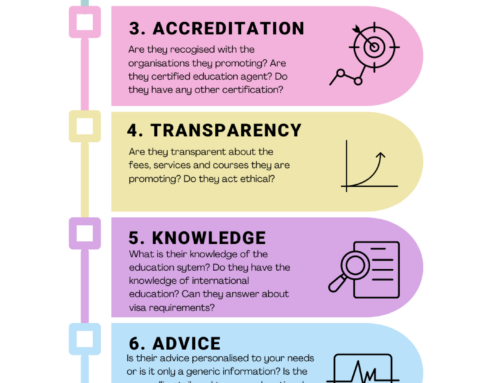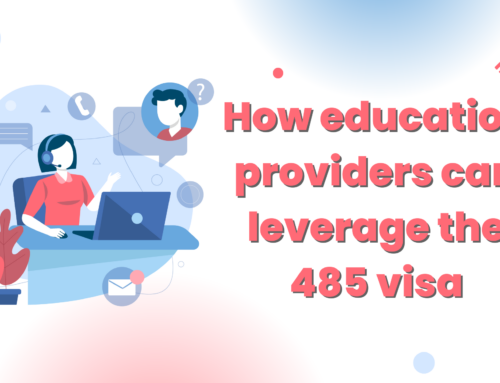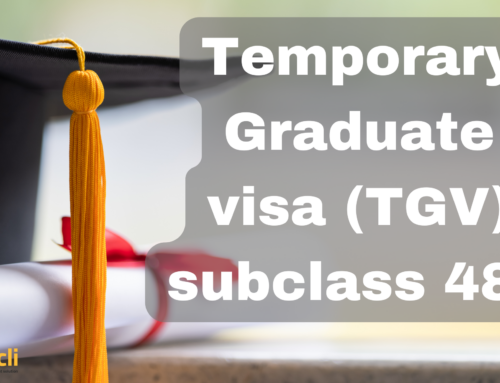- Social media is second-most important information source for prospective students (after only the institutional website) when exploring options for study abroad
- Most social media usage happens before the student even makes an enquiry
- Some social channels, notably TikTok and Instagram, are now being widely used as search engines by students who are looking for recommendations or peer input
- Authenticity and tone are key elements to approaching student-led channels such as these
The rise of social media in the digital age has made it possible for universities all over the world to reach out to prospective students from all over the world. Facebook, Instagram, Twitter, LinkedIn, and YouTube provide unparalleled access to a global audience of potential international students, with over 4.5 billion users worldwide as of my most recent update in 2021. In this article will discuss the various ways in which social media can be used for marketing purposes, with a specific focus on reaching and engaging international students.
The Power of Social Media in International Student Marketing
- The global reach of social media makes it possible for educational institutions to recruit students from all over the world, regardless of where they happen to live.
- Compared to more conventional channels of advertising and recruitment, such as print media and face-to-face gatherings, social media marketing can save money.
- Institutions can engage with prospective students and answer their questions through social media by using tools like comments, likes, shares, and direct messages.
- Data analytics: These platforms feature powerful analytic tools that enable targeted and data-driven advertising campaigns by providing insights into user behavior, demographics, and engagement metrics.
- Prospective international students frequently base their choices on the opinions and experiences of their peers. The recommendations and testimonials of satisfied customers are amplified by social media, making it a reliable resource.
Social Media – A Powerful Tool for International Student Marketing
Before diving into social media marketing strategies for international students, it is important to highlight a valuable resource that can multiply your efforts. Educli is an interactive marketplace where educational institutions and agents can promote their offerings to prospective students, including those from other countries. When it comes to linking schools with students from all over the world, Educli is a great resource for reaching potential students all over the world, as it attracts over 10,000 unique visitors every week.
The student journey
Put yourself in the shoes of a student who is planning for study abroad. Where does their research take them? Probably to quite a few different sources where they can gather up facts and details about different study options: programmes, admissions, fees, travel, and visas.
But aside from those practical matters, what other things might this student be wondering about at this stage? One thing we know from research in the field is that students are quite concerned about simply fitting in on campus and making friends.
But how would a student know if a particular institution or school is the right fit for them? Recent studies provide some clues.
The QS International Student Survey, for example, tells us that 85% of students use social media in their research about study abroad. In fact, after the institutional website, social media channels are the second-most important channel for students who are exploring where they will study.
The QS survey also reveals that 70% of students’ exploration about what kind of social experience they might have on campus or in a city occurs before students even submit an enquiry to an institution or school. The implication here is that students are often looking on social media for a general sense or gut feeling of whether or not a school is the right fit for them. They are asking, “Is this place for me?” “Can I see myself there?” And “Will I fit in?”
Which platform?
Here are a few key ideas to consider when it comes to beginning or expanding your social media marketing:
- Choose carefully:
There are many apps and platforms out there, but each one will take some measure of budget and staff time to develop. So choose carefully and be guided by real insights into which channels are most important to the students you are trying to reach. - Participate:
Spend time on the social channels you are exploring. Observe, practise, and learn how people talk to each other and interact in that space. - Get your students involved:
Peer-to-peer influence is crucial when it comes to social. You will learn a lot from your students about how to be successful on popular channels. Let students help shape or even lead your outreach efforts on social media. - Be real:
Anything that is not authentic, or that feels like codified marketing language, is just not going to work with Generation Z. Express the values and the intent of your institution or school in an authentic way.
Most of all, understand why your students are looking for and sharing information on social channels in the first place. When it comes to study abroad, there is a very human question at the heart of this activity and it amounts to this: “Is this place for me? Can I see myself there?” You should, in every aspect of your approach to social media, aim to answer those questions as completely as possible.
Strategies for Attracting International Students
- Create Engaging Content:
Share informative, entertaining, and visually appealing content that showcases your institution’s offerings, campus life, and student testimonials. High-quality images, videos, and stories are key to capturing attention. - Use Multiple Platforms:
Different social media platforms attract different demographics. Use a combination of platforms to reach a wider international student audience. For example, use LinkedIn for professional engagement, Instagram for visual storytelling, and Facebook for broader visibility. - Advertise Strategically:
Invest in paid advertising on social media to target specific demographics, such as age, location, interests, and education level. This precision ensures your message reaches those most likely to enroll. - Engage Influencers:
Collaborate with student ambassadors or micro-influencers who can authentically represent your institution to their followers. Their personal experiences can resonate with prospective students. - Chatbots and Messenger Marketing:
Implement chatbots on platforms like Facebook Messenger to provide quick responses to inquiries and guide students through the admissions process. - Virtual Campus Tours:
Given the global nature of the target audience, offering virtual campus tours through platforms like YouTube and Instagram Live can provide an immersive experience. - Run Contests and Challenges:
Engage with students by hosting contests, challenges, or scholarship opportunities on social media. This encourages participation and interaction. - Localized Content:
Tailor your content to specific regions and cultures to resonate with international students. Consider translations and localized advertisements. - Engage with Q&A Sessions:
Host live Q&A sessions where prospective students can ask questions and receive real-time answers from admissions officers or current students. - Storytelling:
Share success stories of international students who have excelled at your institution. This can inspire trust and confidence in your programs. - Track and Analyze Data:
Regularly analyze social media data to evaluate the effectiveness of your campaigns. Adjust your strategies based on what works best.
In today’s globally interconnected world, international student recruitment relies heavily on the use of social media. Attracting a diverse and dynamic group of international students can be achieved through the strategic use of social media’s global reach, engagement potential, and data-driven insights, as well as the resources provided by platforms like Educli. Institutions can take advantage of social media’s full potential and make a splash in the global education market by implementing the strategies discussed in this article.





Leave A Comment